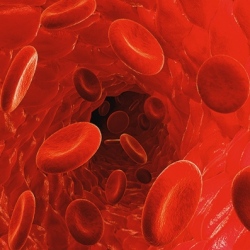
By sampling the baby’s blood from the umbilical cord, researchers can get an early snapshot of the child’s immune system. They’ve found that blood from kids who later develop food allergies contains more chemical signals that promote inflammation and lower concentrations of T cells, which tone down immune system responses.
Researchers analyzed immune cells in samples of the kids’ umbilical cord blood. Then, when the children were 1 year old, the team tested whether they were allergic to a range of foods, including eggs, cow’s milk, and peanuts.
The toddlers who had food allergies also showed higher numbers of a type of white blood cell called a monocyte at birth. Monocytes form the immune system’s reserves. When we get sick, they transform into cells such as macrophages that battle pathogens.
Zhang and colleagues found that monocytes from the allergy-prone kids weren’t just more numerous, they were also hyperactive, reacting more vigorously to a bacterial molecule than did monocytes from allergy-free children. In other words, they responded more aggressively to apparent threats than did monocytes in the toddlers who didn’t develop allergies.
Previous studies haven’t linked overactive monocytes to childhood food allergies, so the researchers tested the cells’ effects on other immune cells. In culture dishes, the signals emitted by the monocytes of allergic kids caused natural regulatory T cells, which normally suppress allergic reactions, to do the opposite; they morphed into helper T cells that drive these reactions.
Monocytes’ molecular messages also spur “undecided” helper T cells to convert into allergy-promoting helper T cells, the researchers report online today in Science Translational Medicine.
What these results mean, Zhang suggests, is that the immune system of some children “at birth is already primed” to develop allergies. Why allergy-prone kids are born with overactive monocytes isn’t clear, Zhang says. A mother could be exposed to something during pregnancy, perhaps in her food, that alters the baby’s developing immune system. Genetic differences could also influence the sensitivity of monocytes.
“It’s highlighting a somewhat different mechanism than has been highlighted before,” says immunologist Oliver Burton of Boston Children’s Hospital, who wasn’t connected to the study. But the large number of children in the study and the authors’ careful analysis make the results believable, he says.
“The paper provides laboratory tests to show that newborns who develop food allergies may be different from newborns who don’t,” says allergist and clinical immunologist Marshall Plaut of the National Institute of Allergy and Infectious Diseases in Bethesda, Maryland. He cautions, however, that researchers still need to confirm that monocytes in the body release the same chemical signals as those released by monocytes in the lab.
Because the chemical signals released by the hyperactive monocytes promote inflammation, the study implies that quelling inflammation could curb allergies. The scientists suggest that we need further research on measures, such as changing the mother’s diet, which might tone down inflammation.
